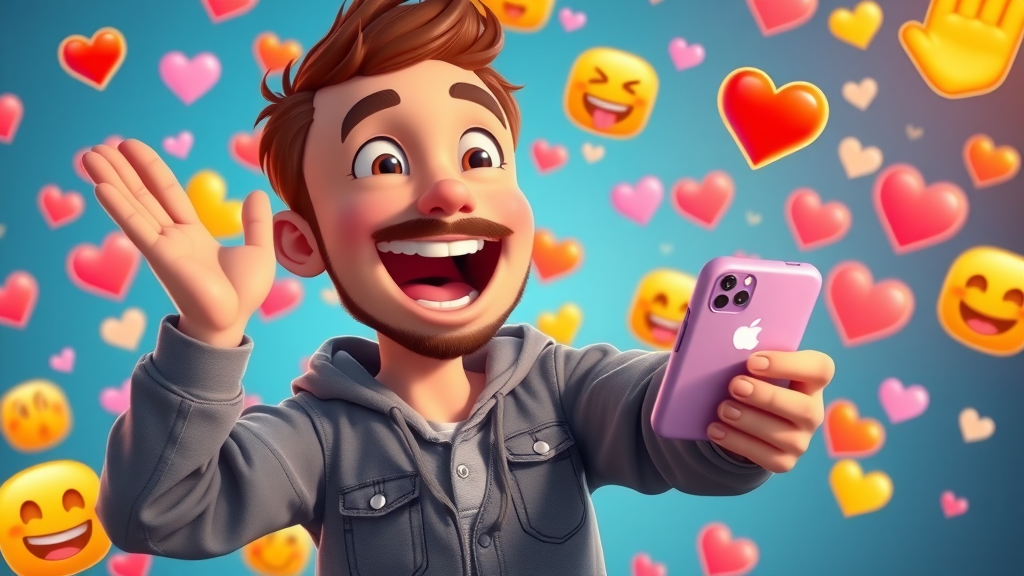Did you know? Over 90% of businesses credit digital content creation as their top marketing catalyst, driving not only brand awareness but also up to 70% of their leads online. From viral videos to must-read blog posts, the power of digital content creation is everywhere—fueling the world’s most influential brands, creators, and communities. Whether you’re looking to amplify your brand, launch your journey as a content creator, or sharpen your digital marketing edge, understanding the nuts and bolts of digital content could be your key to success. Let’s unlock the strategies, tools, and secrets that can turn your creativity into influence and impact, one piece of content at a time.

Unveiling the Impact: Why Digital Content Creation Matters
"90% of marketers leverage digital content creation to expand their audience and boost engagement, making it a non-negotiable pillar of modern business success."
Digital content creation has rapidly become a vital part of every successful organization’s toolkit. A compelling digital content strategy not only draws in potential customers but also creates meaningful connections with audiences worldwide. As search engines reward brands that produce relevant, quality content, creators must adapt their approach to maintain an edge over competitors in the crowded digital market.
The impact goes far beyond simple presence; it’s about engagement, trust, and measurable growth. When you invest in creating content that resonates—whether it’s a blog post, podcast, video, or interactive graphic—you set the foundation for ongoing success and brand authority. In essence, digital content isn’t just “stuff” you post online; it drives your business’s heartbeat, attracts the right target audience, and keeps them coming back for more.
What You'll Learn About Digital Content Creation
- The fundamentals and evolution of digital content creation
- Key digital content creation tools and resources for content creators
- How to develop an effective content creation strategy for your target audience
- Actionable tips to optimize the content creation process for social media and other channels
- Best practices for monetizing your digital content
Understanding Digital Content Creation: Definitions and Core Concepts
What is Meant by Digital Content Creation?

Digital content creation refers to the process of producing any form of content—written, visual, audio, or interactive—for consumption or engagement across online channels. Unlike traditional content, digital content is designed for digital media platforms and is optimized to engage, inspire, educate, or entertain an online audience. This encompasses a wide array of outputs, from polished blog posts and newsletters to creative video content and interactive infographics.
At its core, digital content creation is about delivering value to your target audience by addressing their interests and needs. Whether you’re building a blog post that answers pressing questions, designing compelling social media graphics, or developing engaging videos for your YouTube channel, the ultimate aim is to inspire action, promote sharing, and foster loyalty. Through a thoughtful creation process and strategic use of content creation tools, you can ensure that your content breaks through the noise and stands out in the digital marketplace.
Content Creator Roles in Digital Content Creation
- Blog writers and editors
- Video producers and YouTube channel managers
- Social media strategists
- Graphic designers and illustrators
A successful digital content team brings together diverse talent, each specializing in different media formats and platforms. Blog writers pen well-researched articles that serve as cornerstone resources, while editors refine these works for online consumption and search engine visibility. Video producers and YouTube channel managers leverage visual storytelling, harnessing the popularity of video content to foster deeper connection and higher engagement rates. Social media strategists analyze current trends, curate impactful posts, and manage interactions across different platforms to maintain a strong presence and community. Finally, graphic designers and illustrators create visually appealing elements—such as infographics and interactive images—to make your message pop and encourage sharing across digital channels.
Types of Digital Content
- Blog posts and articles
- Social media posts and stories
- Videos, reels, and livestreams
- Podcasts
- Infographics and images
The digital universe thrives on variety. Knowing which types of content appeal to your target audience—and which are best suited to specific media platforms—is vital for creating content that stands out. Blog posts and articles offer in-depth information and boost organic search engine rankings. Social media posts and stories provide bite-sized updates and behind-the-scenes looks, fueling quick engagement on fast-moving platforms. Video content, including reels and livestreams, delivers high-impact storytelling with wide viral potential. Podcasts dive into topics in a conversational form, perfect for building thought leadership and longer engagement. Infographics and images break down complex information into captivating visuals, perfect for cross-channel promotion and instant audience appeal.
As you explore the many roles and tools involved in digital content creation, it’s also important to consider how the right technology can streamline your workflow. For a closer look at the most effective solutions for managing your social presence, check out this guide to top social media management tools for busy marketers—a resource that can help you stay organized and maximize your impact across platforms.
The Evolution of Digital Content: Key Trends and Milestones
From Static Pages to Interactive Digital Content

Digital content has undergone a radical transformation in just a few decades. Early internet content was static and one-dimensional, consisting mostly of plain HTML written content on basic websites. As digital media progressed, so did the expectations and consumption habits of audiences. Today’s digital content is highly interactive—ranging from clickable infographics to immersive VR experiences—changing how content creators engage and inspire.
Interactive content fuels higher engagement and time-on-site metrics, both of which are closely monitored by search engines and platforms. This new era emphasizes not only the importance of creativity but also the necessity of using advanced content creation tools to stay relevant. The shift from static to dynamic means every brand and content creator must innovate continuously to capture and retain the attention of their audience.
How Social Media Changed Content Creation
The rise of social media was a game-changer for digital content creation. Platforms like Facebook, Instagram, Twitter, and TikTok have redefined the way people connect, consume news, shop, and make decisions. Instead of static, one-way communication, social media encourages real-time interactions and shares—making content go viral overnight and turning everyday people into global influencers.
Content creators now have the opportunity to reach millions instantly, but the challenge lies in creating content tailored for each platform's unique algorithms and cultural trends. Social media strategists must continually adapt their content creation strategy to changing formats, from Instagram Stories to YouTube Shorts, ensuring they maximize each channel’s potential for engagement and reach.
Rise of Content Creators and YouTube Channels

The democratization of technology and the surge in online video consumption have given rise to a new class of content creators: digital natives who build followings on YouTube channels, Instagram, TikTok, and more. Unlike traditional media, these creators own their channels of distribution, allowing for unique, authentic connections with their fans and immense monetization potential.
YouTube has especially empowered individuals to transform passion into profession. With tools for video content production and robust analytics, any aspiring content creator can analyze trends, optimize their digital content, and steadily grow a loyal audience. Today, branded channels and independent creators alike are leveraging their storytelling abilities to shape trends, inform purchasing decisions, and influence culture globally.
Digital Content Creation Tools, Platforms, and Resources
Top Content Creation Tools for Every Content Creator
| Tool | Description | Key Features | Price Tier | Best Use Case |
|---|---|---|---|---|
| Canva | User-friendly graphic design for non-designers | Templates, drag-and-drop, stock assets | Free/Paid Pro | Social media images, infographics |
| Adobe Creative Cloud | Industry-standard suite for graphic and video editing | Photoshop, Illustrator, Premiere Pro | Paid | Advanced graphic design, video editing |
| Premiere Pro & Final Cut Pro | Professional video editing platforms | Timeline editing, visual effects, audio tools | Paid | YouTube videos, commercials |
| Buffer & Hootsuite | Social media management and scheduling | Multi-platform posting, analytics | Free/Paid | Managing multiple social accounts |
| WordPress | Most popular blogging and CMS platform | Customizable themes, SEO plugins | Free/Paid | Blog posts, websites, e-commerce |
Specialized Tools for Social Media and Video Content
- Canva and Adobe Creative Cloud for image design
- Premiere Pro & Final Cut Pro for video editing
- Buffer and Hootsuite for scheduling digital content
Content creators thrive on using the right tools for their medium. Canva and Adobe Creative Cloud make professional graphic design accessible for myriad content types, while Premiere Pro and Final Cut Pro are essential for producing high-quality video content at scale. For streamlining multi-channel distribution, Buffer and Hootsuite help schedule, analyze, and optimize social media posts, ensuring consistent engagement and brand voice across multiple media accounts and platforms.
Tool Selection Guide for Your Content Creation Strategy

Choosing the right content creation tools is a critical part of building your digital content strategy. Start by assessing your needs: Do you require robust video editing, or are you focused primarily on written content? Consider both your current objectives and long-term vision. For those prioritizing blog content, look for tools with powerful SEO features. If your goal is engaging video or social media output, invest in platforms with reliable editing and scheduling functionality. As your digital content creation evolves, don’t hesitate to explore new tools—innovation can often lead to increased efficiency and better results.
Remember, consistency and quality should guide your tool selection. Avoid tool overload; instead, select a suite that streamlines your creation process while empowering your creativity and unique style. The optimal setup allows you to focus more on creating content and less on troubleshooting technical hurdles.
Building a Winning Content Creation Strategy
Setting Goals for Your Digital Content Creation Efforts
Every effective digital content strategy begins with clear, measurable goals. Are you seeking to boost brand awareness, drive website traffic, grow your email list, or increase product sales? Identify primary objectives and break them into achievable milestones that guide your content creation process—this focus will keep your work purpose-driven and results-oriented.
Set SMART goals (Specific, Measurable, Achievable, Relevant, Time-bound) for every campaign and post. For instance, aim to grow your social media followers by 20% in three months or generate 1,000 new leads via blog posts in six months. Periodically reviewing these targets helps ensure your efforts align with larger business priorities and allows you to adapt as your digital marketing landscape shifts.
Identifying and Researching Your Target Audience
- Demographics
- Content preferences
- Online behavior
- Platform usage
Understanding your target audience is fundamental to creating digital content that resonates and converts. Start with demographic data such as age, location, and interests. Analyze what type of content they engage with—short videos, long-form articles, interactive quizzes, or visuals? Dive deeper by monitoring their online behaviors: which media platforms are they most active on? What questions do they ask, and what problems do they seek to solve?
Effective content creators use surveys, analytics, keyword research, and competitor analysis to uncover these insights. The more you know about your audience’s preferences and pain points, the better you can tailor your content to meet—and exceed—their expectations, ensuring maximum engagement and higher conversion rates.
Developing a Digital Content Strategy for Channel Distribution

A multi-channel approach is essential in today’s fragmented digital landscape. Start by mapping out all potential distribution channels: your website, email newsletter, social media accounts, YouTube channel, and partner sites. Prioritize platforms where your audience spends most of their time and adjust your content format and messaging accordingly.
Align each piece of content with the requirements and strengths of each platform. For instance, a detailed blog post can be repurposed into bite-sized social media graphics, short explainer videos, or even podcast topics. Use analytics to measure which channels deliver the most engagement, leads, or conversions—then double down on what works best for your digital content creation goals.
Aligning Content Types with the Creation Process
Every type of content, from social media reels to comprehensive whitepapers, has a unique creation process. To maximize efficiency, create a content calendar that aligns with your publishing goals, team workflow, and seasonal trends. This ensures you consistently deliver value and maintain relevance across all platforms.
Optimize your process by batching similar tasks, leveraging templates, and using automation tools wherever possible. By aligning your content types with efficient creation workflows, you minimize burnout and maximize your brand’s growth and audience engagement. The result? A resilient, scalable content engine.
Step-by-Step Digital Content Creation Process
- Brainstorm content ideas: Draw inspiration from trending topics, audience questions, and competitor gaps.
- Plan and outline content: Map your message, objectives, and call to action.
- Create digital assets: Draft copy, design visuals, and record audio/video as needed.
- Edit and optimize for SEO: Refine for clarity, search engine ranking, and user experience.
- Schedule and publish on the right channels: Time your release for maximum reach and track performance in real time.
- Analyze performance and refine process: Use analytics to identify improvement opportunities and inform your next content cycle.

This repeatable creation process enables content creators of every skill level to move from ideation to publication with confidence. By embracing each step—from strategic brainstorming to goal-driven analysis—you ensure every piece of content works toward growing your brand’s reach, credibility, and profitability.
Social Media and Digital Content: Optimizing for Maximum Engagement
Social Media Best Practices for Content Creation

Success on social media demands more than eye-catching visuals; it requires a data-driven, audience-first approach. Know the best times to post on each platform, use high-quality creative assets, and tailor your tone and message to each audience segment. Always include clear calls to action—comments, shares, likes, or links to more in-depth resources.
Engagement is king in digital content creation. Prompt your audience with questions, encourage user-generated content, and swiftly respond to comments or messages. Consistent branding and leveraging analytics tools help refine your approach, ensuring every post contributes to your broader content strategy and aligns with your intended results.
Cross-Promotion Strategies for Digital Content
- Leverage popular hashtags
- Collaborate with other content creators
- Monitor analytics and adjust in real-time
Maximize your reach by cross-promoting content across multiple channels. Use popular hashtags to surface your content to wider audiences. Collaborate with other successful content creators to tap into their followers—joint projects, interviews, and giveaways are excellent strategies. Lastly, monitor your real-time analytics. Be prepared to tweak headlines, visuals, or posting times to match evolving audience preferences, helping your digital content creation efforts continually deliver the best returns.
Monetizing Digital Content Creation: Turning Passion into Profit
Do Digital Content Creators Make Money?

Yes, digital content creators across all niches make substantial income by leveraging multiple revenue streams. Whether you’re a YouTube channel manager, blogger, or Instagram influencer, your digital presence opens doors to both passive and active income opportunities. Today, even part-time creators can generate sustainable revenue through smart content creation and distribution.
Success stories abound, with some creators going from zero to six- or seven-figure businesses in under a year. The key is to build an engaged audience first and diversify your income streams strategically. From AdSense to affiliate marketing and direct sponsorship, the possibilities are nearly limitless for creators dedicating effort, consistency, and a well-planned content strategy.
Revenue Streams for Content Creators
- YouTube AdSense
- Brand collaborations
- Patreon & paid memberships
- Affiliate marketing
- Merchandise sales
Modern content creators tap into a variety of revenue models. YouTube AdSense pays creators based on ad views and clicks, while brand collaborations and sponsorships reward those who can influence and engage niche audiences. Platforms like Patreon offer fans a direct way to support your work, while affiliate marketing lets you earn commissions by recommending products and services. With an established following, selling branded merchandise—t-shirts, eBooks, courses—becomes a potent way to expand your content business’s profitability.
Case Studies: Successful Digital Content Creation Businesses
"Content creators who focus on building a loyal online community see much higher long-term ROI from their digital content development."
Consider the story of a travel vlogger who, by focusing on authentic storytelling and consistent community engagement, built a multi-channel platform—generating revenue through YouTube, sponsored social media content, and a thriving online store. Or the DIY blogger who diversified from blog posts to digital courses, harnessing email lists and webinars to amplify reach and conversions. These case studies prove that a robust digital content creation approach, paired with ongoing community building, is the real secret to long-term profit and business growth.
Measuring Success: Key Metrics for Digital Content Creation
Analytics and KPIs for Content Creators
- Engagement rates
- Impressions and reach
- Conversion rate
- Audience growth
- Content shares
Tracking the right metrics is essential for continuous improvement in digital content creation. Engagement rates (likes, shares, comments) reveal how well your content resonates. Impressions and reach measure overall visibility, while conversion rate links your content efforts to business outcomes (signups, sales, downloads). Monitoring audience growth—across followers, subscribers, and email lists—provides insight into your expanding influence, and content shares amplify reach organically, demonstrating viral potential. Regularly review your analytics dashboard, set benchmarks, and tweak your content strategy to enhance performance over time.
Using Feedback and Insights to Improve Digital Content
Utilize comments, ratings, DMs, and audience surveys to collect actionable insights on what works and what doesn’t. Don’t hesitate to ask your audience directly for input—they’re your best resource for what content to create next. Combine qualitative feedback with quantitative analytics to make data-driven decisions, ensuring your digital content strategy evolves along with audience needs and digital trends.
People Also Ask: Key Questions About Digital Content Creation
What is meant by digital content creation?
Digital content creation refers to the process of developing and publishing information in a digital format for online distribution—such as writing blog posts, producing videos, designing infographics, or curating podcasts. The goal is to engage, inform, or entertain users across various digital media platforms, helping brands and creators connect meaningfully with a target audience.
What is an example of a digital content?
An example of digital content is a how-to video posted on YouTube, a branded infographic shared on Instagram, or a thought-provoking blog post published on a business website. These assets are created with the intent of reaching audiences online through search engines, social media, and email newsletters.
What are the 5 C's of content creation?
The 5 C’s of content creation are Clarity, Consistency, Creativity, Credibility, and Customer-focus. These principles ensure your digital content is easy to understand, reliably published, original, trustworthy, and tailored to your audience's needs.
Do digital content creators make money?
Yes, digital content creators can earn money through a variety of channels, including ad revenue on platforms like YouTube, brand partnerships, affiliate marketing, paid memberships, and the sale of their own digital products. The key to monetization lies in building an engaged audience and offering them valuable, well-crafted content.
FAQs About Digital Content Creation
-
How do I start as a digital content creator?
Start by choosing a content niche, defining your target audience, learning basic content creation tools, and consistently publishing high-quality content on a platform like YouTube, Instagram, or WordPress. -
What is a digital content strategy?
A digital content strategy is the plan you create to guide what, when, where, and why you’ll publish digital content, ensuring it aligns with your business goals and reaches the right audience. -
Which platforms are best for digital content creation?
The best platforms depend on your goals and audience: YouTube and TikTok for videos, WordPress for blogging, Instagram for visuals, and LinkedIn for B2B content. -
What skills do digital content creators need?
Key skills include writing, video or photo editing, graphic design, SEO, and an understanding of analytics. Creativity and adaptability are crucial traits. -
How often should I publish content?
Consistency is more important than frequency, but a good rule is to post at least once or twice a week to maintain audience engagement and search engine visibility.
Key Takeaways: Mastering Digital Content Creation
- Digital content creation is crucial for any brand or content creator in the digital age.
- Using the right tools streamlines the content creation process.
- Content strategy and understanding the target audience are vital for sustained engagement.
- Measuring content performance helps optimize future efforts and ROI.
- Monetizing digital content is attainable with the right approach and consistency.

Conclusion: Harness the Power of Digital Content Creation
"The future belongs to those who master digital content creation—don't get left behind."
Apply these actionable strategies and explore how digital content creation can drive real results for your brand or business. For more information, read The Ultimate Guide to Content Marketing: Strategies, and How to Build a Winning Plan.
Explore Further: Content Marketing Strategies

To become a leader in digital content creation, arm yourself with the very best in strategy and practical know-how. Dive even deeper by continuing your learning journey with comprehensive guides designed for creators at every level.
If you’re ready to elevate your digital presence even further, consider exploring the essential principles of digital branding. Understanding how to build a memorable and consistent brand online can accelerate your growth and set you apart in a crowded marketplace. Discover proven digital branding secrets for instant growth and learn how to position your content for long-term success by visiting this in-depth guide to unlocking digital branding strategies. Take the next step and transform your content into a powerful driver of brand recognition and audience loyalty.
Ready to Transform Your Digital Content Creation? Reach Out Today!
Need Help? Call Digital Media Marketing at 1-586-997-0001.
 Add Row
Add Row  Add
Add 




Write A Comment